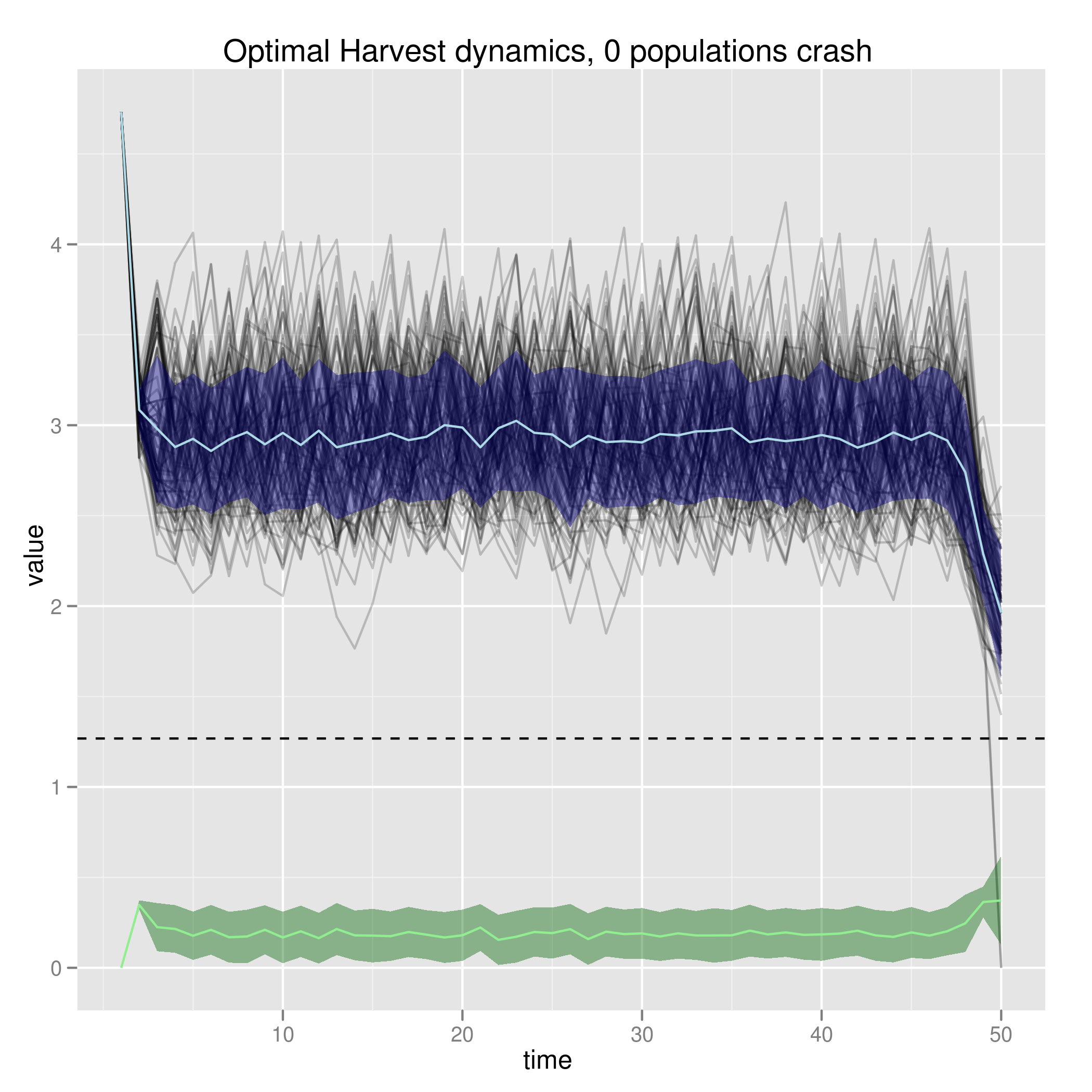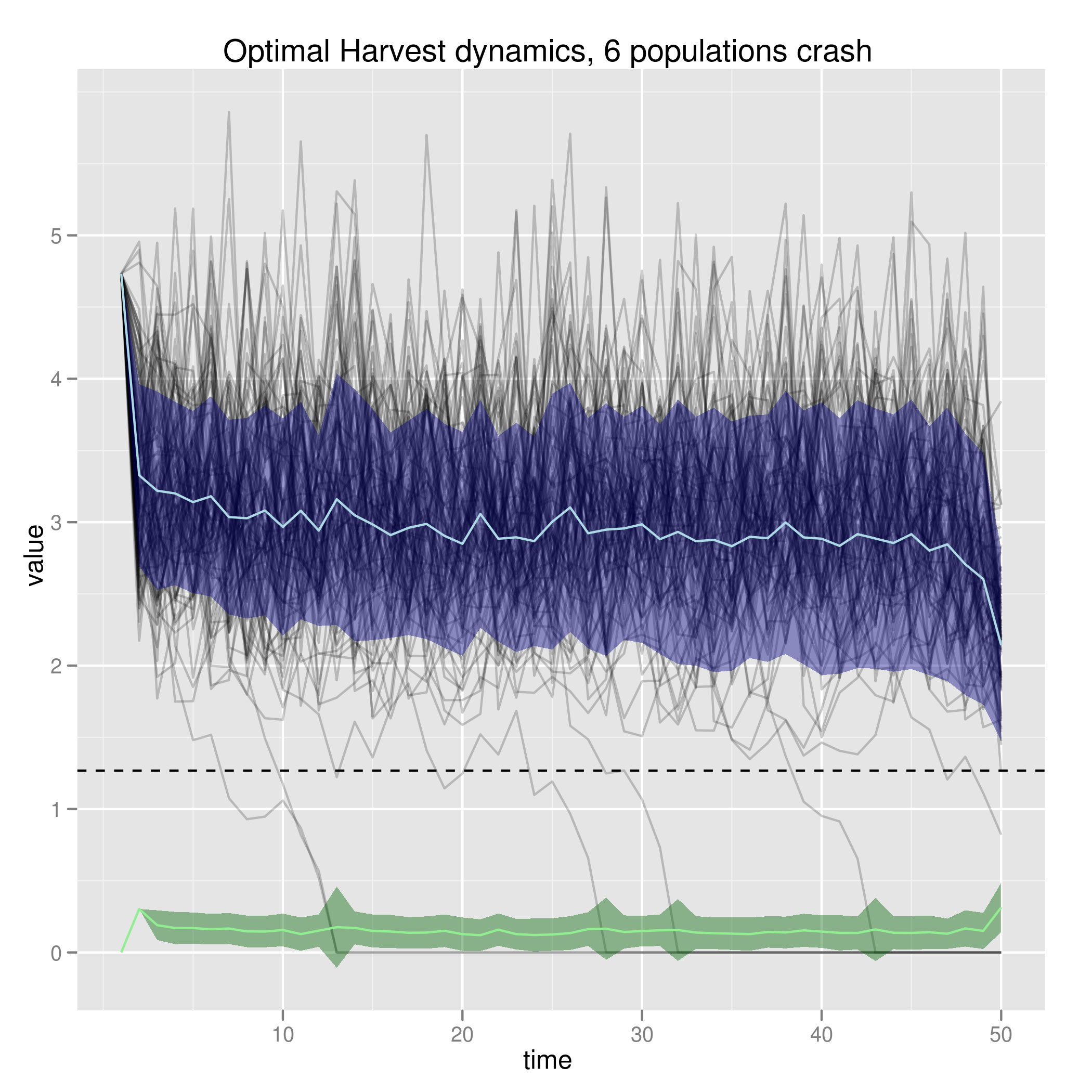I’m now computing the optimal solution under three sources of noise (compare with my earlier examples of calculating the optimal solution assuming only growth noise, but simulating dynamics with other noise sources). See the statement of problem details, essentially:
\[ \max_{ \{ q_t \} \leq 0 } \mathbb{E} \left\{ \sum_0^{\infty} \alpha^t h_t \right\} \] s.t. Fish population follows: $ x_t = z_t^g f( x_{t-1} - h_{t-1} ) $ and measured stock is given by: $ m_t = z_t^m x_t $ while harvest is: $ h_t = (x_t, z_t^i q_t) $ Where $ z^g $ denotes uncertainty in population growth, $ z^m $ denotes uncertainty in measurement for the stock assessment, and $ z^i $ denotes uncertainty in harvest implementation. \[ m_t = z_t^m z_t^g f\left( x_{t-1} - \min(x_{t-1}, z_{t-1}^i q_{t-1}) \right) \]
Sethi et al. 2005 (Sethi et. al. 2005).
Properly, this involves integrating over all three probability distributions
\[ \int_x^{x+\Delta} dx \int_0^{\infty}dy \int_0^{\infty} dh\cdot \ln\mathcal{N}(x; \log(f(y,h)) + \mu, \sigma) P_q(h) P_m(y) \]
though as I noted, we can ignore integrating over the grid when it is high-resolution, due to the normalization step.
Still not getting this integral to compute fast enough to do the deterministic calculation of the transition matrix. Meanwhile, I estimate the transition matrix instead by simulating the transition process 999 times. Not fast, but parallelizes easily.
Comparing variation from noise sources
Each uses the log-normal distribution with $ = 0.2$. Jake points out economists use the uniform distribution to emphasize the impact of noise as a kind of extreme case (since “realistic” modeling of the noise is a fanciful notion anyhow), so I should probably include that as well. Should also allow more analytic work.
Noise in harvest implementation only

Noise in stock assessment only

Noise in population growth only

All three sources

References
- Sethi G, Costello C, Fisher A, Hanemann M and Karp L (2005). “Fishery Management Under Multiple Uncertainty.” Journal of Environmental Economics And Management, 50. ISSN 00950696, https://dx.doi.org/10.1016/j.jeem.2004.11.005.